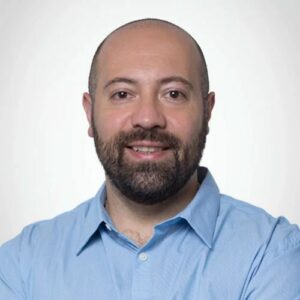By 2050, approximately, 64% of the developing world and 86% of the developed world will live in urban environments.
As populations grow in cities around the globe, these environments must rise to the new challenges and demands that the modern era presents. While smart cities were growing in sophistication prior to the pandemic, governments will need new tools and resources to grapple with the transformation onset by the pandemic, as we slowly emerge from one of the biggest crises of the century.
While smart cities won’t address all the obstacles brought on by COVID-19, they will allow people to recover — even if that recovery is slow.
The Problem with “Regular” Cities
What’s so wrong with so-called regular cities? Nothing, if we’re stuck in the past.
The past few years have seen a huge increase in remote work, a change in the way we communicate, a dramatic rise in the use of appliances and technologies, and many other overhauls of our ways of thinking and being — not to mention a global pandemic.
With new innovations and dramatic upheaval, it should come as no surprise that we need new systems for doing and being. Smart cities are a large part of the answer. We need a solution that is more resilient to change.
What’s a Smart City?
A smart city involves an infrastructure built with “smart” technologies and innovations, such as:
• IoT devices
• Cloud computing
• Artificial intelligence
Using this framework, cities can better respond to the needs of their people and build a location that supports and drives community. From smart grids that are more energy-efficient to autonomous vehicles, a smart city is essentially a network of innovations that drives and improves the habits and abilities of citizens.
An Oracle survey of officials in 82 countries and 167 cities found out that 65% see smart cities as critical to their strategies.
What’s on the Horizon?
As smart city projects gain traction across the world, technologists, innovators, leaders, and governments must collaborate to respond to the needs of communities and the larger world.
An Emphasis on Sustainability
One of the main aims of smart cities is to support the environment through “green tech.” Technology that backs these locales enables the monitoring of energy consumption, air quality, and much more, helping reduce waste and contributing to sustainability.
Smart thermostats and energy grids are 2 examples of smart city innovations that support a more sustainable future.
Diversity and Equity
These types of issues aren’t just connected to the environment. There are also diversity and equity problems. For example, Black Americans are 75% more likely than white Americans to live in areas that are heavy in pollution, emissions, and traffic.
Attention to diversity and equity is driving many smart city initiatives. Leaders are taking a hard look at how to boost the quality of living for diverse communities and rectify the challenges they face.
Community Building
Connectivity is another pivotal feature of smart city projects. These initiatives are being rolled out with an eye on gaining public trust and engaging citizens, connecting people, governments, and environments in a transparent way.
“Practitioners within the smart cities movement should also focus on gaining (and regaining) public trust through transparency and a commitment to privacy — this is essential to forward progression,” said Kiran Jain, head of policy and general counsel for Replica, a company spinoff of Alphabet’s Sidewalk Labs.
How to Address Problems with Smart Cities
As many benefits smart cities offer, they aren’t without their problems. We have seen numerous complications arise when governments attempt to move too quickly or don’t have the numbers and technology to back up their decisions.
Jeremy M. Goldberg, WWPS Director of Critical Infrastructure, encourages leaders to keep 3 principles in mind:
• Building for the people
• Enabling creativity
• Solving real problems
Focus on Meaningful Data
To that end, he advises using data to back up all critical decisions. “Cities are complex places,” he writes. “Understanding them requires managing large volumes of data and harnessing the compute power necessary to deliver real-time insights. Decision-makers must be armed with accurate, consistent data and work closely with members of the community to understand the needs of residents and businesses.”
Data-fueled decisions will prove essential to build and move smart cities along. They are critical in developing infrastructures and making communities thrive.
Develop Partnerships
Partnerships will prove vital to the funding and support of both the development and sustainability of smart cities. These innovations require significant amounts of money to thrive. Fortunately, public-private partnerships can serve to support smart city escalation well into the future. Governments and tech firms, for example, can partner to create an environment that is innovative and durable.
Build Trust
The development of solid, sustainable smart cities depends on trust — with constituents and partners alike.
There are many principles involved in building a sense of trust and being transparent. One of the most important is security. Given the very real threats presented by digital transactions and activities, it’s no surprise that citizens would be concerned about security.
This is, perhaps, why the Dutch Data Protection Agency published recommendations on smart city cybersecurity and data protection — and why so many other governments have been similarly responsible.
Security and standards will prove to be critical to the endurance of a smart city — one that persists well into the future.
The Future of Smart Cities: Closer Than We Think
Amsterdam. Barcelona. Boston. Chicago. Copenhagen. Dubai. London. New York. Singapore.
These are just some of the areas that are already considered “smart.” And that list is steadily growing. As we come closer to a future where the pandemic is a distant memory, governments are reinvesting their efforts in their infrastructures and remembering that their constituents are the backbone of their cities. They are realizing that smart cities aren’t just a catchphrase — they are a way of life.
The benefits can’t be overstated. From an improved quality of life to safety and security to sustainability, the positive outcomes are within grasp — and they will mean a better future for generations to come.






